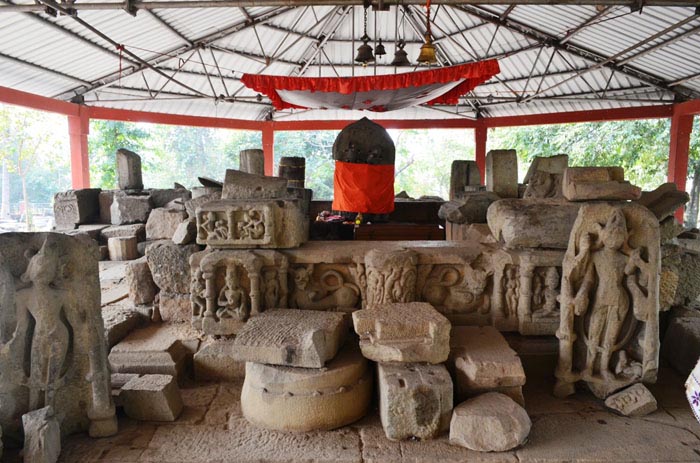Madan Kamdev Temple

Information of Madan Kamdev Temple, Guwahati, Kamrup, Assam
The temple of Madan-Kamdev is identified to be amongst the most significant historical sites in the entire state of Assam. The famous Madan Kamdev Temple is a place of worship and the reigning deity of the temple is Lord Kamdev or the 'God of Love' as per the Vedic mythology. The temple is located in a small town called Baihata in the Kamrup district, Assam. The Madan Kamdev Temple is popularly referred to as the Khajuraho of the North-East India. The temple is exactly located on the top of a hill called Madan Kamdev hill which is also alternatively known as Dewangiri as well.
Madan Kamdev Temple Religious Significance
The state of Assam is stated to be a microcosm in the map of our country as from the ancient period individuals belonging from various creeds, races and cultures flocked and settled in Assam. The manifestation of the colonizers can be refracted in terms of the traditions, religion and also in the unearthed archaeological sites in the state at various times. It is believed that Aryan as well as Mongoloid source manipulated the culture of the state and this can be accounted to be the reason behind the resemblance shared between the Madan Kamdev sculptures and the ones found in the Khajuraho temples. The temple is known to include three chief characteristics which make it religiously significant and distinct from the other temples. The initial and the most distinguished feature is that not a single crow steps inside the complex of the temple for reasons still unknown. The second significant aspect noticed in the Madan Kamdev Temple is despite the fact that east is considered to be the consecrated direction according to Hinduism and the Hindus face the east while offering their prayers to the God, people are learnt to offer their prayers facing the reverse direction in the Madan Kamdev Temple. The last and the most imperative feature is that the state of being undress or rather the aspect of nudity cannot be found to be imitated in any of the other gods or goddesses of Assam and even bears no resemblance with any statues or figures in the other temples in the state of Assam. The temple complex includes about twenty other shrines dedicated to Lord Shiva and his consort Parvati.
Madan Kamdev Temple Mythology & History
As per the legends, it is believed that Madan or Kama who was the 'God of Love' took rebirth in this particular site after he was reduced into dust by annoyed Lord Shiva. It has been stated by few that the god was reborn and unified with his consort Rati on the same hilltop. According to another legend, the temple is known to share a romantic alliance owing to the presence of several erotic sculptures in the temple. The legends further state that one who wishes to get blessed from god Kamdeva at this temple then chances are that the particular individual would be bestowed with blessings four times more in comparison to the other shrines owing to the blessings offered by Lord Shiva on god Kamdeva.
Madan Kamdev Temple Architectural Significance
The actual record relating to the origin of the various temples within the complex is still unknown but it has been learnt through various studies and researches that the compound was constructed between the period ranging from 10th to 12th century A.D. with regard to the pal dynasty. The temple is identified to be amongst the most ancient archaeological sites of the country. The carved figures from monolithic rock confirms Nagara architectural pattern and the temple occupies an area of about 500 metres.
- Andhra Pradesh Temples
- Assam Temples
- Bihar Temples
- New Delhi Temples
- Goa Temples
- Gujarat Temples
- Jammu and Kashmir Temples
- Karnataka Temples
- Kerala Temples
- Madhya Pradesh Temples
- Maharashtra Temples
- Odisha Temples
- Punjab Temples
- Rajasthan Temples
- Sikkim Temples
- Tamil Nadu Temples
- Telangana Temples
- Uttar Pradesh Temples
- Uttarakhand Temples
- West Bengal Temples